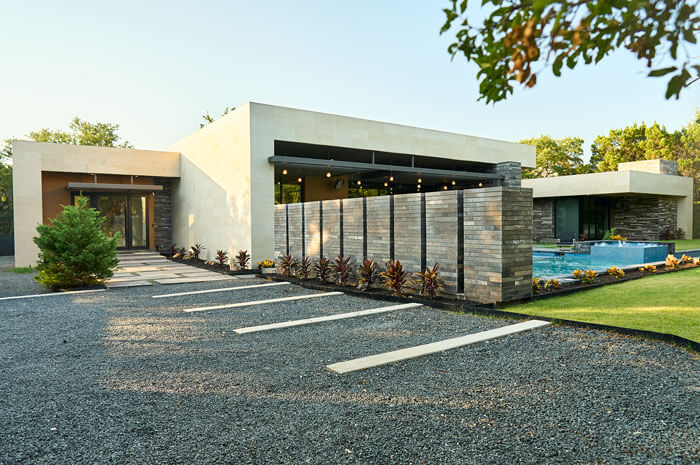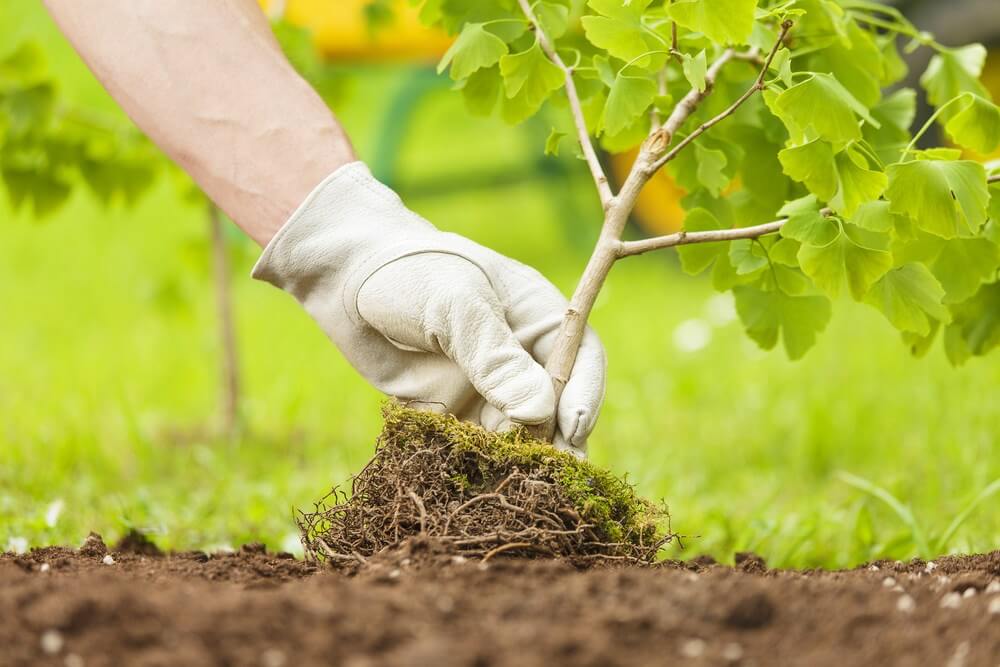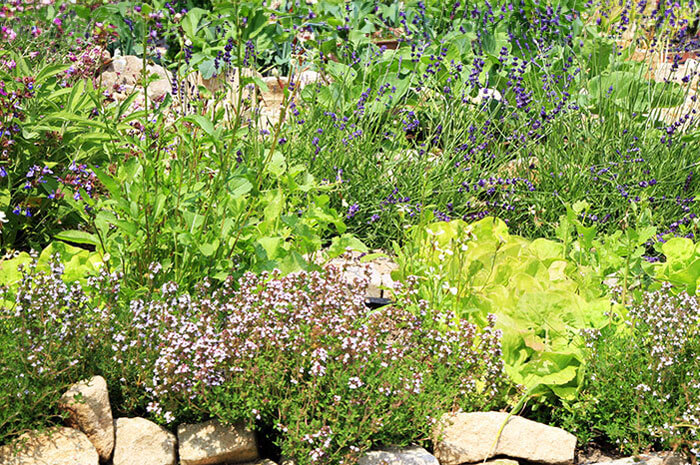
We all know that plants need air, sunlight and water to survive. But when you live in an area that experiences drought or has seen less rainfall in the last few years, that last requirement can throw you for a doozy. Or what if you don’t want to use extra water to keep your lawn and garden looking spry? Not to worry.
You don’t need to choose between a browning eyesore or a yard of prickly cacti when it comes to designing a drought-tolerant front yard. There are plenty of lawn and garden alternatives that are low-maintenance and a beauty to behold while still being drought-tolerant.
What Does “Drought-Tolerant Plants” Mean?
Just as animals of differing sizes need different food and activity requirements, plants have distinct needs. You can get just about any type of plant from anywhere in the world delivered right to your front door, but that plant species evolved in its native habitat and requires the same type of environment it comes from in order to thrive. While that can mean some plants need a lot of water, humidity and sunlight, there are plants where the opposite is true as well.
Drought-tolerant plants are those that don’t need much water to thrive. Your mind may automatically go to cacti and other succulents that are found in desert regions, they aren’t the only type that have evolved to handle dry weather with ease. From coneflowers to yarrow and lavender, there is an abundance of choices if you want to transform your garden into an oasis even without running the hose.
Why Choose Drought-Tolerant Lawn and Garden Alternatives?
The number one reason someone would want to replace their lawn and garden with drought-tolerant alternatives is because they live in an area that frequently experiences drought. In towns across California, for example, residents are banned from using water on unnecessary things such as watering their lawn when drought conditions become dire.
Likewise, you may not want to use water on your garden for economic or ecological reasons, even if your location doesn’t deal with debilitating drought.
Replacing Your Lawn
Everyone loves a lush, green front lawn, but if you’re dealing with it browning due to lack of water, you may want to replace it with a low-maintenance, drought-tolerant option. There are a number of ways you can go about designing your yard:
Replace with Drought-Tolerant Grasses
If you can’t imagine doing away with grass entirely, there are species that do better with drought, like buffalograss and fescue. Make sure that the option you choose can handle your soil pH and weather conditions (you don’t want to plant a grass just to find out your winters will kill it or it won’t grow in your substrate). The easiest way to find what grasses work best for your locale is to head to your local garden store where their experts can help you determine what options you have.
Embrace Ground Covers
If you want a green carpet of plants, but don’t care whether it’s turf, you can always go with a ground covering. Ground coverings are low-maintenance, low-to-the-ground plants (such as creeping thyme and Dutch white clover) that spread out along the dirt. Not only do they need less water, they often don’t grow tall enough for you to have to mow.
Create a Rock or Wood Chip Garden
If you want to do a complete 180, there are always alternatives that don’t require water at all. Replacing your yard with decomposed granite, pea gravel or wood chips gets rid of the need to break out the hose. And it doesn’t have to look sad or desolate! Create garden beds filled with drought-tolerant flowers and plants, and use larger rocks and boulders as focal points.
Drought-Tolerant Flowers
Whether you want to create a completely drought-tolerant lawn and garden, or want to pepper in flowers that will draw the eye even if your grass is browning a bit, there are many types of drought-tolerant flowers that will look gorgeous, even in the height of summer. Plant these in beds or let them grow wild throughout your yard. Your neighbors (and local pollinators!) will thank you:
- Lavender
- Stonecrop
- Coneflower
- Yarrow
- Lantana
- Russian Sage
- Salvia
- Bougainvillea
- Rosemary
- Yucca
- Gaillardia
- Verbena
- Butterfly Weed
- Cacti
- Agave
- Oleander
- Butterfly Bush
- Euphorbia
- Lambs-Ear
- Beardtongues
- Coreopsis
- Zinnia
- Catmint
- California Poppy
What is the Cost to Convert a Lawn or Garden to Drought-Tolerant Alternatives?
This really depends on a number of factors: the size of the yard, how much of the yard you want to replace, if you are having an expert design your landscape, etc.
If you are hiring a landscape designer, their fees will differ, but according to Angi’s 2023 data, it will typically range from between $4.50 to $12 per square foot. Of course, if you want to add features and details like rock walls, that will cost extra.
If you aren’t in a rush and don’t mind doing the work yourself, you can easily find the above-mentioned flowers at your local garden shop or even classified ads such as Craigslist or Facebook Marketplace for fairly cheap prices. Replace sections of your yard or garden beds as you find plants that suit your fancy. You can also browse tools from Toro to ensure you have everything needed for the job.
Regardless of your reasons for wanting a drought-tolerant lawn and garden, there are so many low-maintenance options that will leave your yard looking gorgeous, no matter what the summer heat brings your way.



